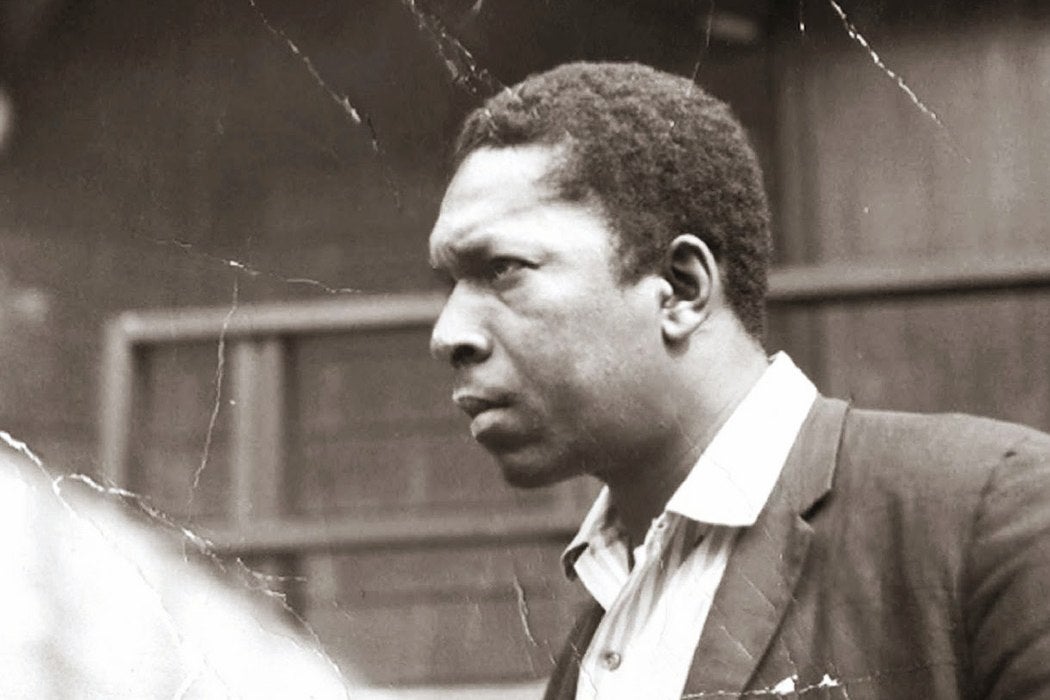This gem came to me by way of the YouTube algorithm. I have listened to John Coltrane on occasion, and I must admit that "A Love Supreme" is a masterclass in concocting a magnus opus; however, on this occasion, one video recommendation kept on popping up for me: "How Coltrane Broke My Favorite Things" by Polyphonic. It was a mostly technical video that outlined the composition of Rodgers and Hammerstein's song My Favorite Things, which was written for The Sound of Music, initially a Broadway musical that went on to become a famous movie. I must guiltily admit that I have never watched The Sound of Music (Rest in Peace to Christopher Plummer)...but I got to learn about this particular piece of music. Having never really listened to the song before, I must admit that it was erroneous of me to to be first introduced to the song in this way because I didn't initially hear the original whose runtime is under 3 minutes; imagine how much less I got to hear of Coltrane's rendition which almost clocks in at a staggering 14 minutes!
I did learn a few things though! Being of a melancholic persuasion, I do tend to prefer songs written in darker more solemn tones. I came to find out in my layman kind of way that those are Minor chords; and the joyous, more triumphant tones...those were the Major chords. My Favorite Things had an interesting mix of both major and minor chords that definitely appealed to Coltrane, and thus he translated his version into modal jazz. By the end of the video it was amazing that I knew more about the technicality of the song than I did about the actual song itself; therefore, I had no choice but to actually sit down and listen.
For the longest time, I was not able to place which specific song this rendition reminded me of; finally, I figured out that it reminded me of Dave Brubeck's Take Five. That infectious groove that permeates this song is what's known as a Vamp (a repetitious progression that sometimes plays as an intro to a solo or can be randomly played as a bookend of sorts; Take Five probably contains one of the most famous jazz vamps on the piano, and on a recent listen I noticed that that vamp basically spans the whole song.
It is Coltrane's tenor sax that actually comes in to remind us that this is actually My Favorite Things, playing the melody from the original composition. He guides us slowly into the mix, first playing the darker chords, lets us get a taste of that infectious vamp, starts off playing the darker chords, then segues into the brighter chords where he lingers for a bit, then takes us back to the dark chords. After this Coltrane takes a seat and McCoy Tyner steps up to take over the reins. I have listened to various Coltrane renditions of this song, and I must say that this studio recording has the best version of the piano solo. In some portions, it sounds so simplistic; Tyner lingers on some note runs like he's letting the tune air out just a bit, and uses this to bookend the more flairy parts of his solo. I was surprised how much he was able to convey by sometimes playing only one note repeatedly (3:42), and there were times when he just went wild (5:08) and I can only imagine the mish-mash his fingers are going through at that moment in time. I love that live versions of a song usually afford an artist a chance for further exploration and the ability to add more flair to a solo; but in this instance, this was the perfect piano solo.
This song is unique for the part that it affords the Bass and Drums. Elvin Jones and Steve Davis are playing a drone that is really only there to support the Piano and Sax. They just sit there providing a "floor" for this performance. This doesn't diminish their skill in the least; in fact, some of the most beautiful moments in this song happen when the Bass & Drums interplay with the Piano: Tyner slowly fades out the piano, and you become more aware of the aforementioned Bass & Drums "floor", then Jones and Davis also fade out to match Tyner.
Between the two of them, I think Tyner chose to play the more subdued solo so that Coltrane could have the more flourishy solo. Coltrane slowly unpacks his solo over the vamp, conservatively flowing over the minor chord section; he gets flashier when the major chords section comes in, and only really lets up as the song ends. His solo (more conservative than other of his renditions) can really only be appreciated by repeated listening. He has all the notes at his disposal, and he wants to let you see that he can use each and every one of them.
Really don't know how many times I've listened to both these pieces, but each time it brings me immeasurable joy. The Coltrane rendition, while being quite a long piece, is the more approachable of the two, the easy listen (in the vein of Take Five). Mehldau's rendition seems to meander a bit, at first being easily approachable, then seeming to lose its way; in my opinion, he actually enhances the song by having the "bitter" middle section break apart the "sweet"; the sweet never is quite as good without the sour. It might not be the easiest of listens, but it is well worth the patience.
Take a chance on listening to these two contrasting renditions. You won't be disappointed.
God Bless.

No comments:
Post a Comment